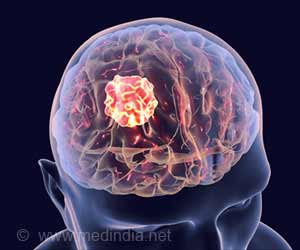UCSF researchers have for the first time used tiny molecules called microRNAs to help turn adult mouse cells back to their embryonic state.
UCSF researchers have for the first time used tiny molecules called microRNAs to help turn adult mouse cells back to their embryonic state.
These reprogrammed cells are pluripotent, meaning that, like embryonic stem cells, they have the capacity to become any cell type in the body.The findings suggest that scientists will soon be able to replace retroviruses and even genes currently used in laboratory experiments to induce pluripotency in adult cells. This would make potential stem cell-based therapies safer by eliminating the risks posed to humans by these DNA-based methods, including alteration of the genome and risk of cancer.
"Using small molecules such as microRNAs to manipulate cells will play a major role in the future of stem cell biology," says senior author Robert Blelloch, MD, PhD, of the Eli and Edythe Broad Center for Regeneration Medicine and Stem Cell Research at UCSF.
Scientists are interested in reprogramming because it would offer a way to create cells that provide a genetic match for individual patients. A patient's skin cells could be reverted to pluripotent cells in the culture dish and then prompted to differentiate into adult cells, such as those of the heart, lung and brain. These cells could then be transplanted into patients, without the fear of rejection.
The study, reported in the April 12, 2009 advanced online edition of the journal "Nature Biotechnology" and scheduled for the May 8, 2009 print issue, used a combination of microRNAs and retrovirus-introduced genes to transform fibroblast cells, found throughout the body of mice and humans, into pluripotent cells.
The current finding comes on the heels of a study published by the group in the December 2008 print edition of "Nature Genetics" that showed that microRNAs, which can be synthesized in the lab, encouraged embryonic stem cells to self-replicate, a finding that has implications for replicating stem cells in the culture dish and exploring stem cells' role in cancers.
Advertisement
In the current study, led by Robert Judson, a graduate student in the Blelloch lab, the scientists induced pluripotency using a combination of infection and transfection. The infection involved introducing three viruses, each containing a transcription factor known to induce pluripotency. The transcription factor for c-myc was not included. The transfection involved a simple process in which the tiny microRNA molecules were mixed with a lipid, allowing them to pass through the cell membrane. By labeling the fibroblast cells, they showed that the treated cells could be incorporated into a mouse embryo and become every cell type in the adult animal, including germline cells that would produce the next generation of mice.
Advertisement
"MicroRNAs give us a new tool to manipulate the fate of cells," Blelloch says.
MicroRNAs are snippets of single-stranded RNA that prevent a gene's code from being translated from messenger RNA into protein. They were debuted in 1993, when scientists reported the discovery of a microRNA in the microscopic roundworm C. elegans. Since then, the field has "exploded," says Blelloch, with hundreds of microRNAs discovered in the last eight years across a broad range of species, from plants to animals.
Produced in the nucleus and released into the cytoplasm, microRNAs home in on messenger RNAs that share part of their genetic sequence. When they find them, they latch on, preventing the messenger RNA from being processed by the protein-making machines known as ribosomes. As such, microRNAs are able to ratchet down a cell's production of a given protein.
Currently, Blelloch and his colleagues are working to replace all four transcription factors with microRNAs and conducting experiments that will reveal the mechanism by which these small molecules are able to induce pluripotency. The team will also be looking to determine which microRNAs might be able to turn adult cells directly into particular adult cell types, by-passing the embryonic stem cell-like stage altogether.
"The goal now is to ensure the safety of induced pluripotent stem cells and to differentiate them into cells that can be used to repair damaged tissue and treat disease," he says.
Source-Eurekalert
ARU










